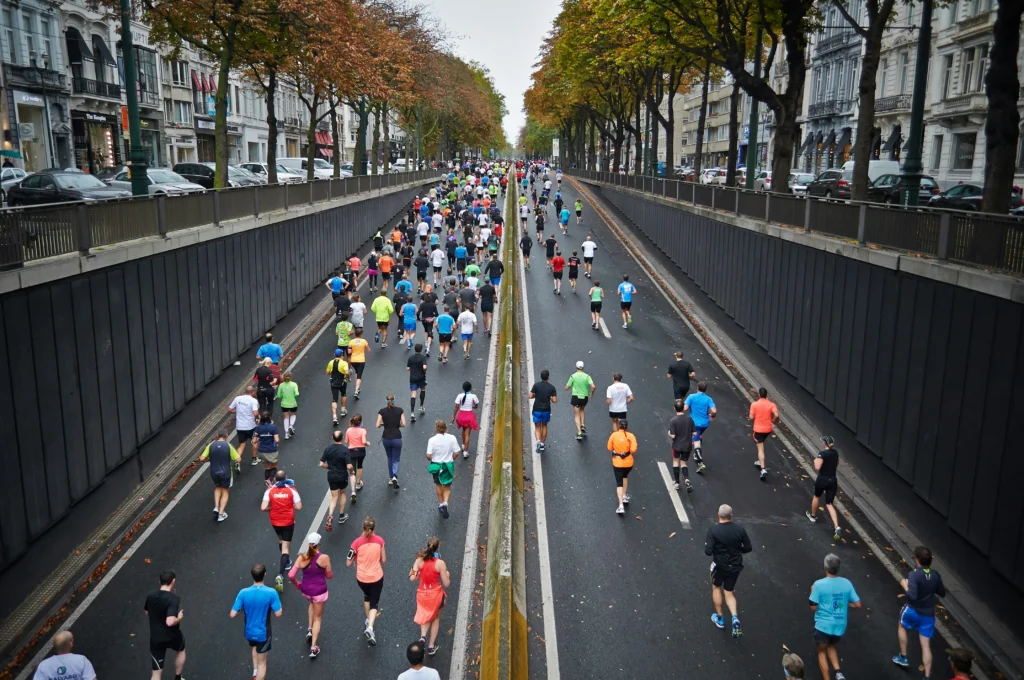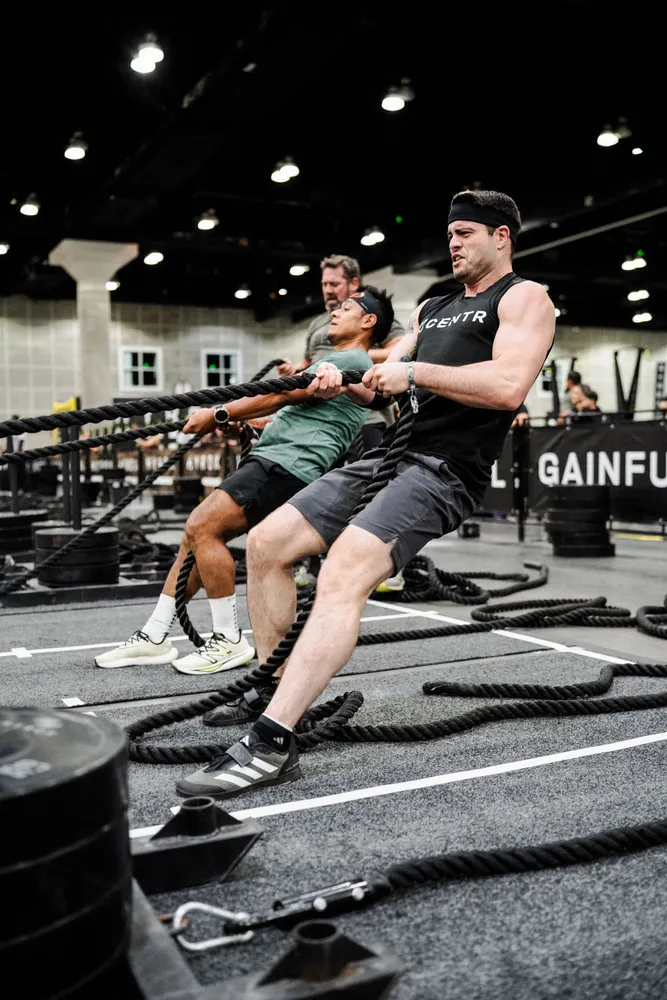For Fitness Brands, Authentic Events Are the Next Growth Channel

Athletech News caught up with Events.com co-founders Stephen Partridge and Mitch Thrower to learn what events are resonating with consumers and how fitness operates can capitalize on the experience economy
The growing interest in health and fitness—paired with Gen Z’s desire for in-person connection—has opened the door for brands to collaborate on high-energy experiences like fitness raves, competitive races like Hyrax (and the training that leads up to them) and even experiential retail events hosted by Nike and Gymshark.
One company at the forefront of this movement is Events.com, a marketplace connecting event organizers with eventgoers, co-founded by Stephen Partridge, president and Mitch Thrower, CEO. Fittingly, both entrepreneurs are avid athletes themselves—Partridge a waterman, surfer, windsurfer and former Olympic hopeful for Barcelona ’92, while Thrower is a 22-time Ironman triathlete and the prior co-founder of Active.com.
As Thrower describes it, we’re living in a rapidly expanding experience economy—one where consumers are prioritizing meaningful activities over material possessions. One sector is especially well-positioned to benefit from the shift: the fitness industry.

“The rise of community-driven events, from running clubs to fitness gatherings with a festival-like atmosphere, capitalizes on the desire for connection, amplified by the isolation of the pandemic and a renewed awareness of health and mortality,” he tells Athletech News. “Organizers are tapping into this trend by leveraging accessible technology to create and promote these events, meeting the demand for social, sensory-rich experiences that blend physical challenge with human interaction.”
Events.com has seen considerable growth in fitness events prioritizing social engagement, with the global running club phenomenon standing out as a prime example, Thrower confirms. Overall, though, the marketplace’s data suggests that shared connection is just as important as the challenge of a heart-pounding fitness event.
“These modern iterations draw diverse participants seeking both exercise and camaraderie, often in outdoor settings that enhance the experience,” he says. “Accessible events like group runs or yoga gatherings are gaining serious traction, appealing to wider demographics and naturally aligning with products or services. They tap into a growing desire for fitness experiences that feel like shared, uplifting journeys.”
It’s a space where even traditional fitness operators—like gym owners—can compete and connect with Gen Z experience-seekers, Partridge adds, by launching their own events that focus on current trends (such as high-intensity circuits or group runs) while integrating their signature offerings.

“Alternatively, operators might consider partnering with established event producers, giving them access to proven frameworks without having to build everything from the ground up,” Partridge says.
Still, it takes more than a flashy event and social-ready branding—authenticity is what truly resonates with consumers, Partridge says, highlighting two major brands that are wildly successful in this area.
“Experiential fitness marketing for this new breed of participatory events and communities is still in its early stages, but brands that succeed are those building authentic connections with consumers during moments of physical and social empowerment,” he says. “Effective campaigns foster loyalty by linking the brand to the event or local fitness communities that drive attendance, creating a sense of belonging. Companies like Lululemon excel with their community-focused yoga sessions and running groups, blending their apparel with a lifestyle ethos. On the other hand, Red Bull’s high-octane fitness challenges align their energy brand with peak performance. Both examples show the power of showing up where customers feel most alive.”
Although 2025 has a highly engaged base of consumers focused on health, wellness, fitness and connection, competition is fierce—and with some signs of tightening discretionary spending, brands may need to get more creative.

“To succeed in the thriving fitness event market this year, organizers need a strong technological foundation,” Thrower advises, adding that Events.com is equipped with all the tools needed for ticketing, marketing, analytics and sponsorship management for maximized impact.
“Beyond that, two elements are critical: first, access to a target audience, whether through local networks or broader channels, to ensure visibility and participation,” he says. “Second, a standout venue or inspiring location can elevate the event into a memorable experience, attracting people who are looking for something worth sharing—something Instagram-worthy. Together, these components create a winning formula for 2025 and beyond.”



